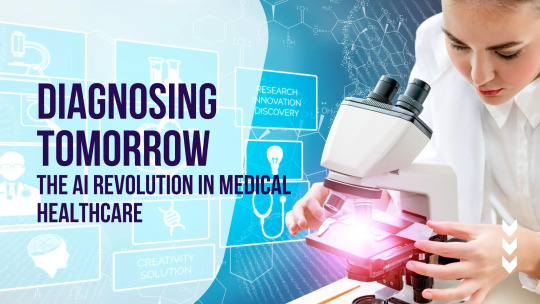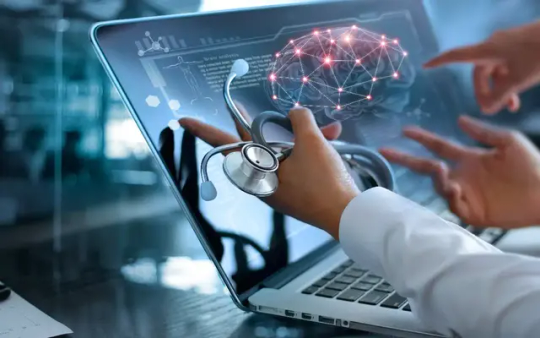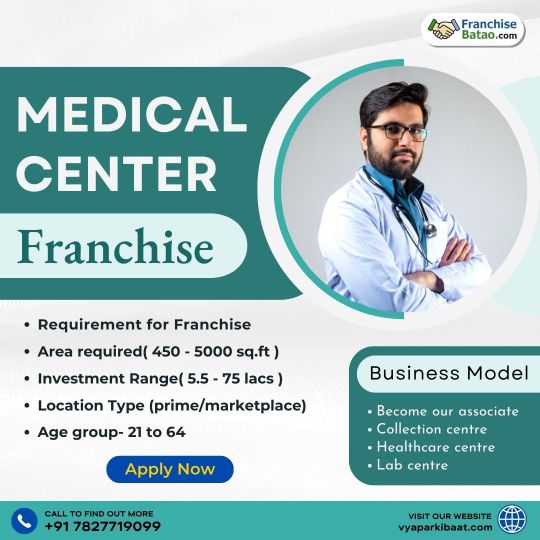#medical startups
Text
Good News From Israel
In the 3rd Mar 24 edition of Israel’s good news, the highlights include:
An IDF veteran drove over 130 miles to take charge of Oct 7 rescue operations.
Israeli sunshine can help grow large families.
A mother of 3 secretly oversees the development of David’s Sling.
An Israeli pesticide makes weeds infertile.
A war cannot stop Israelis from starting new companies.
More sports gold medals for Israelis.
A brave rescued Israeli female hostage has returned to army service.
Read More: Good News From Israel

Not even a war can stop Israel building on its 75-years of success in rebuilding a Jewish State.
Israel continues to build up its basket of subsidized medical treatments, create new remedies for global diseases, discover the secret for building bigger families, and construct medical centers for rehabilitating the injured.
The latest news includes the Israeli woman who oversees the building of Israel's missile defense system; an Israeli app that rebuilds broken speech into coherent conversation; and 30 Israeli NGOs rebuilding lives in Africa. Israeli startups are restoring the environment, while building efficient EV batteries, hydrogen-powered flying cars, and creating sustainable aviation fuel.
Meanwhile, many Jewish citizens of Europe and the US are realizing that now it is the time to build a new life in Israel.
The photo (TY Sharon) is of Jerusalem's Hurva and the Tiferet synagogues, rebuilt and being rebuilt, after being blown up by the Jordanian army in 1948.
#AI#Australia#Christians#climate change#displaced#EV batteries#fertility#Gaza#good news#Hamas#hostages#IDF#Israel#Jerusalem#Jewish#medication#migraine#pesticides#startups#survivors
24 notes
·
View notes
Text

Pet care logo ♡♡♡
PM us if you need a creative logo for your business! 💌🧡
#pet care#pets#dogs#cat#puppy#kitty#medical#veterinary#cute animals#negative space#logos#illustration#artists on tumblr#identity#startup#graphic design#canada
39 notes
·
View notes
Text
Denmark: A significant healthtech hub

- By InnoNurse Staff -
According to data platform Dealroom, Danish healthtech firms raised a stunning $835 million in 2023, an 11% rise over the previous record set in 2021.
Read more at Tech.eu
///
Other recent news and insights
A 'Smart glove' could improve the hand movement of stroke sufferers (The University of British Columbia)
Oxford Medical Simulation raises $12.6 million in Series A funding to address the significant healthcare training gap through virtual reality (Oxford Medical Simulation/PRNewswire)
PathKeeper's innovative camera and AI software for spinal surgery (PathKeeper/PRNewswire)
Ezdehar invests $10 million in Yodawy to acquire a minority stake in the Egyptian healthtech (Bendada.com)
#denmark#startups#innovation#smart glove#stroke#neuroscience#iot#Oxford Medical Simulation#health tech#digital health#medtech#education#pathkeeper#ai#computer vision#surgery#ezdehar#yodawy#egypt#mena
13 notes
·
View notes
Text
i’m not gonna get too worked up about it but like. idk today some of us were talking with our instructors about our future internships and careers and how a lot of the areas we’re passionate about are things we’re unlikely to get stable positions in because scientific progress only gets rewarded if it can be profitable or in someone’s business interests. the fucking song and dance of bowing down to the interests of investors and the almighty nebulous idea of Profit is fucking screwing everything over
#great! i know how to use CRISPR! but am i likely to actually fucking do something useful with this?#no!! and even working for a pharmaceutical is a fucking. deal with the devil sell your soul kind of shit#great! we’re inventing new lifesaving drugs and medical treatments! now it’s going to cost those who need it a motherfucking fortune#while all that money goes into shitty people’s pockets#in some ways this feels more disheartening than studying ES in college#because i thought that bc i’d be learning more practical skills it would feel less hopeless? that id know how i could help because i have#skills? instead of reading critical theory and thinking what the fuck can i even do?#but it’s like. ok yeah i can become a lab tech. but all the work i’d do might not ever matter even if it was important#the big companies are often shitty and money-driven but startups are unstable
2 notes
·
View notes
Text
International Academic Conferences on Distance Education
International Academic Conference is a great way which allows researchers to present their findings to a committee which taking place around the world. An academic conference is a platform where you get a chance to share your research findings and engage in insightful discussions with others on the latest happenings of a particular subject in your field of study. It offers the opportunity to peer over the fence and see what’s going on outside of a particular specialty. It also can be called a research conference, academic congress or symposium. In this field researchers can come together, present their research, comment on each other’s research, network with one another and engage in career development in their profession. Symposium, Seminar, Colloquium and Workshop are the four different types of conferences. Communication, problem solving capacity, leadership and decision making power and many more skills are developed through conferences.
Distance education is a system of education in which there is no face to face contact of the source of information and the learner, they are separated by time and way of distance but they are linked through correspondence, television, radio talk, phone or computer. The main aim of distance education is to provide quality education to which those cannot access traditional education due to geographical, financial and other constraints. A degree acquired in the distance mode from a UGC-DEB is equivalent to a degree acquired through the regular mode. In distance education there is a flexible schedule, unmatchable accessibility, less cost and reduces travelling pressure. The learning experience must have a clear purpose with tightly focused outcomes and objectives.
Distance education aims to give quality education to all. How to manage it? What is Distance education actually? What are the types of Distance education? Distance education system in India. What is difference between open education and distance education? Who is the father of distance education? What is the benefit of distance education? What are the advantages and disadvantages in distance education? What is online education system? These are the valid point to know about distance learning. Can learning environments must include problem based as well as knowledge based learning. Distance learning is clearer when we attend conference, seminars, workshops, events related to distance education.
#academic conferences#news#conference#developers & startups#european conferences#medical conferences in uk#engineering conferences in uk#global conferences#events#history
2 notes
·
View notes
Text

We are Best Digital Marketing Agency - Digisecret
1 note
·
View note
Text
Blockchain & It’s Implications in the Medical Coding World

There has been no shortage of commentary over the last many months concerning blockchain technologies, crypto, and digital assets. Starting as far back as 2017, I was engaging in varied discussions with industry colleagues regarding how blockchain might impact the world of healthcare and more specifically the world of medical coding and revenue cycle management. Back in 2017, and even more recently, I was not necessarily dismissive of blockchain as it related to healthcare but I was challenged to understand, like many, how it could be used to appropriate effectiveness in the HIM space. Reflecting back on this time I probably should have spent more time reading white papers on the topic and educating myself versus forming opinions based off of industry sources and other data inputs that were probably no more “in-the-know” than I was. I guess in some ways that’s how new technologies play out.
Visit For More Information : https://queuelogix.com/blockchain-its-implications-in-the-medical-coding-world/
0 notes
Text
Diagnosing Tomorrow : The AI Revolution in Medical Healthcare

INTRODUCTION
The intersection of technology and healthcare has yielded remarkable advancements throughout history, and now, we stand at the precipice of another groundbreaking leap – the integration of artificial intelligence (AI) into medical diagnostics. The marriage of AI’s computational prowess with the intricacies of medical science is reshaping the landscape of healthcare, offering improved accuracy, efficiency, and accessibility in the diagnostic process. In this article, we’ll delve into how AI is ushering in a new era of medical diagnostics, transforming the way we approach disease detection, patient care, and overall well-being.
In the ever-evolving landscape of healthcare, a groundbreaking revolution is underway, poised to transform the way medical diagnostics are conducted. Artificial Intelligence (AI), once confined to the realm of science fiction, has now become an integral part of modern medicine. With its ability to process vast amounts of data, recognize patterns, and make intelligent decisions, AI is playing a pivotal role in revolutionizing medical diagnostics and ultimately improving patient outcomes.
THE POWER OF AI IN MEDICAL DIAGNOSTICS
Traditional medical diagnostics have long relied on the expertise of skilled professionals to interpret medical images, analyze lab results, and identify potential diseases. However, the human capacity for analysis is limited by time, resources, and the sheer complexity of medical data. This is where AI steps in, offering an unprecedented capacity to handle and make sense of enormous datasets with remarkable speed and accuracy.
One of the primary advantages of AI lies in its ability to detect subtle patterns that might escape even the most experienced human eye. For instance, in medical imaging, AI algorithms can identify minuscule anomalies in X-rays, MRIs, and CT scans that could signify the early stages of diseases like cancer or neurological disorders. This early detection can dramatically increase the chances of successful treatment and recovery.
THE CURRENT DIAGNOSTIC LANDSCAPE
Traditional medical diagnostics have long relied on the expertise of healthcare professionals, involving extensive manual analysis of patient data, medical history, and diagnostic images. While effective, this approach has its limitations, including the potential for human error, time-intensive processes, and discrepancies in interpretation.
THE AI ADVANTAGE IN DIAGNOSTICS
Enhanced Accuracy: AI algorithms can analyze vast datasets and medical images with unparalleled accuracy. They can detect subtle patterns, anomalies, and correlations that might be imperceptible to the human eye, leading to earlier and more accurate diagnoses.
Efficiency and Speed: AI can process and analyze medical information in a fraction of the time it would take a human expert. This efficiency can expedite the diagnostic process, crucial in cases where rapid intervention is necessary.
Personalized Medicine: AI can process individual patient data, such as genetic information and medical history, to tailor diagnoses and treatment plans to each patient’s unique needs, optimizing outcomes.
Remote Diagnostics: With telemedicine on the rise, AI-powered diagnostic tools can facilitate remote consultations and assessments, providing medical care to individuals in underserved or remote areas.
APPLICATIONS OF AI IN MEDICAL DIAGNOSTICS
Radiology and Imaging: AI algorithms excel at analyzing medical images, such as X-rays, MRIs, and CT scans, identifying abnormalities and assisting radiologists in making more accurate interpretations.
Pathology: AI can aid pathologists in identifying cancerous cells in tissue samples, potentially reducing errors and expediting diagnoses.
Cardiology: AI-powered algorithms can analyze heart rhythms, ECGs, and other cardiac data to predict cardiovascular events and suggest appropriate interventions.
Dermatology: AI-driven image analysis can assist dermatologists in diagnosing skin conditions, potentially improving the early detection of skin cancers.
Predictive Analytics: AI can analyze patient data to predict disease risks and outcomes, enabling proactive interventions to prevent or manage conditions.
CHALLENGES AND CONSIDERATIONS
While the potential of AI in medical diagnostics is immense, several challenges must be navigated:
Data Privacy: Handling patient data requires strict adherence to privacy regulations to ensure patient confidentiality and data security.
Bias and Interpretability: AI algorithms must be carefully designed to mitigate biases and provide transparent explanations for their diagnoses.
Human Collaboration: AI should be viewed as a tool that complements human expertise rather than replaces it. Collaborative efforts between AI and healthcare professionals are essential.
AI IN MEDICAL IMAGING
Medical imaging, a cornerstone of modern diagnostics, has experienced a paradigm shift with the integration of AI. AI-powered image analysis algorithms can swiftly process complex images, highlight abnormalities, and even predict the progression of diseases based on patterns they’ve learned from vast datasets.
For instance, in radiology, AI algorithms have demonstrated remarkable accuracy in detecting various conditions. In some cases, AI has shown the potential to outperform human radiologists in identifying certain abnormalities. This doesn’t replace radiologists, but rather enhances their capabilities, allowing them to focus on more complex cases and improving overall diagnostic accuracy.
PREDICTIVE ANALYSIS AND EARLY INTERVENTION
AI’s capabilities extend beyond image analysis. Machine learning algorithms can analyze patient data, from medical history and genetics to lifestyle factors, to predict the likelihood of certain diseases. By identifying high-risk individuals, healthcare providers can intervene earlier, offering preventive measures and personalized treatment plans.
Consider the example of diabetes. AI can analyze data from multiple sources to predict the likelihood of an individual developing diabetes. Armed with this information, healthcare professionals can work with patients to implement lifestyle changes that reduce the risk of disease onset.
CHALLENGES AND CONSIDERATIONS
While the potential of AI in medical diagnostics is immense, there are challenges that need to be addressed. One of the major concerns is the need for robust and diverse datasets. AI algorithms learn from data, and if the data used is skewed or incomplete, it can lead to biased outcomes. Ensuring that AI systems are trained on representative data from various demographics is crucial to avoiding bias and ensuring equitable diagnostics.
Additionally, the “black box” nature of some AI algorithms can raise questions about transparency and accountability. Understanding how AI arrives at a particular diagnosis or prediction is essential for building trust between medical professionals, patients, and AI systems.
THE HUMAN-AI PARTNERSHIP
It’s important to note that AI is not a replacement for healthcare professionals. Instead, it’s a powerful tool that can enhance their capabilities. The ideal future lies in a symbiotic relationship between humans and AI, where medical professionals use AI-generated insights to make more informed decisions, while patients receive more accurate diagnoses and personalized treatment plans.
LOOKING AHEAD
The future of medical diagnostics is undoubtedly intertwined with the rise of AI. As AI technology continues to advance, we can expect even more precise and early diagnoses, leading to improved patient outcomes and a more efficient healthcare system overall.
In conclusion, the AI revolution in medical diagnostics is not a distant dream but a rapidly evolving reality. By harnessing the power of AI, healthcare professionals can unlock insights hidden within vast datasets, predict disease onset, and ultimately save lives through early intervention. While challenges exist, the potential benefits are immense, heralding a new era of healthcare that is data-driven, proactive, and patient-centered. As we stand on the brink of this transformation, it’s clear that the future of medical diagnostics is one where AI plays a pivotal role in shaping healthier lives for all.
THE ROAD AHEAD
The AI revolution in medical diagnostics is already underway, and its trajectory is promising. As technology continues to evolve, AI systems will become more sophisticated, capable of handling even more complex diagnostic tasks. However, it’s crucial to approach this revolution with ethical considerations, patient well-being, and regulatory compliance at the forefront.
CONCLUSION
The fusion of artificial intelligence with medical diagnostics is revolutionizing the healthcare landscape. The capabilities of AI to analyze and interpret medical data with unparalleled accuracy and speed have the potential to transform the way diseases are detected, treated, and managed. As we embrace this new era of healthcare, collaboration between technology and medical professionals will drive innovation, improve patient outcomes, and pave the way for a healthier tomorrow. The future of medical diagnostics is here, and it’s powered by AI.
#Diagnosing Tomorrow : The AI Revolution in Medical Healthcare#software development#web development#web design#digital marketing#web design agency in toronto canada#app development#digital marketing agency canada#web devlopment#multimedia / flash animation services#graphic design#web design company in mississauga#developers & startups
0 notes
Text
OWEBEST: Your Partner in Healthcare Software Development Services and Solutions
Healthcare Company
Making software for health companies is hard because they deal with classified health information . They want to build apps that keep this data safe and private but also use it to help people get healthier. In the medical world, making software is always changing. After the lockdown, there's a big need for healthcare software. But most medical groups don't know much about it.

Good healthcare software should have some important things, like
Way to see all your patients in one place.
More information about patients, from their health to how they like to talk.
A way to connect with patients better.
A way to make better choices about their care by working together on a health plan.
If you're a healthcare startup looking to use digital tools to improve patient care and how you run your business, this article can help. We will talk about the world of healthcare software development services and everything you need to succeed with your startup.
If you're interested in developing your Healthcare Company please click on the link to get in touch with us now.
#healthcare#software development#business#startup#networking#healthcare software companies#digital tools#development services#growth business#healthcare software development#owebest#Medical software companies
0 notes
Text
youtube
We stan a girlboss fraud.
As a STEM Academy dropout myself, can we talk about how INCREDIBLY DAMAGING America's obsession with wunderkinds has been? Not only does it put too much pressure on the young and ambitious, but it promotes a form of ageism which encourages investors to overlook more experienced people who have more realistic goals.
#support womens wrongs#gaslight gatekeep girlboss#19 yo CEO should always be a red flag#you're not special you're just rich#just another reason not to shop at walgreens#don't surround yourself with yes-men when starting a cult omg this isn't brain surgery#lmao why did you put Henry Kissenger on the board of your biotech startup#things we should listen to children's opinions about: school safety parental rights the environment who should be president#things we should not listen to children about: how to cure cancer. that question i'd prefer someone old who's been to medical school
1 note
·
View note
Text
Are you looking for develop women's health tracing app? here is the complete process to develop a women’s health tracking app with additional information, such as features, tech stack, and cost. Read the blog to know more:
#enterprises#business#startups#technology#healthcareappdevelopment#womenhealthtrackingappdevelopment#healthcaresoftware#medical
0 notes
Text

Start Your Medical Center Franchise in Your City.
Become a Franchise of India’s Fastest-Growing Medical Brand
Requirement for Franchise
- Area required(450-5000sq.ft)
- Investment Range(5.5-75lacs)
- Location Type(prime/market place)
- Age group- 21 to 64
Call For Franchise:- 7827719099
Fill out the form:- https://forms.gle/k6aY8VwxneJ5UkBp8
#medicalcenter#franchisebatao#franchiseopportunity#ServiceCenter#smallbusiness#business#medical#insta#businessstartup#healthcareindustry#startup#businessideas#supportsmallbusiness#entrepreneur#globiramedical#sanjivani#sanjog#opportynity#franchisor#beyourownboss#franchiseowner#sold#money#lowinvestment#VIRAL#TRANDING#INSTAGRAM#explorepage#medicalbusiness
0 notes
Text

Logo design for a medical business ☆☆☆
Need a logo? PM us!
#health medical pharma#pharmacy#medicare#medicine#logo#business#entrepreneur#illustration#branding#artists on tumblr#creative#startup#pigeon#birds#mockup#packaging#pattern
11 notes
·
View notes
Text
Must-Know Concepts for Life Sciences financial valuation
Strategy Inc. offers a full suite of strategic lifescience consulting services for essential financial and market due diligence combining rigorous analysis with decades of industry knowledge. Determining the value of innovation drives prioritization of resources, captures investment at the highest value and ensures selection of the indication with the highest probability for successful commercialization. Our clients include enterprise companies, financiers, and emerging companies with technologies in all stages of the product lifecycle; however, nearly half of the innovations where clients seek Strategy Inc. insight are preclinical.
#financial valuation of Life Science startups#valuation of Life Sciences companies#valuation of medical device companies#medical device company valuation multiples#medical device valuation#Valuation for Life Science Companies#Valuing A Life Sciences Company
0 notes
Text
#global conferences#news#academic conferences#conference#developers & startups#european conferences#medical conferences in uk#events#engineering conferences in uk#history
0 notes
Text
Medical Device Startups: 5 Risk Management Essentials
Even when you have created a brilliant and innovative medical device your startup journey is going to be challenging and there will be risks you have to manage along the way before you achieve success.
Risk management is continually a hot topic of conversation when it comes to medical device startups. You have to be able to identify and manage these risks.
Continue reading Untitled

View On WordPress
#medical device#medical device risk management#medical device startup#medical device startups#medical devices#risk management
0 notes